Ecological Threshold: Bridging Ecology and Advanced Architecture Through a Deconstructive Analysis of the Braga Pavilion
“After architecture… a new Nature! We propose redefining the city as fertile terrain for breeding new practices for the synthesis of agri-urban ecosystems. The notion of agri-urbanity establishes a link between the instant/immaterial of contemporary digital urbanity with the slow/material that is inextricably related to the rural condition.”
– ecoLogicStudio’s manifesto
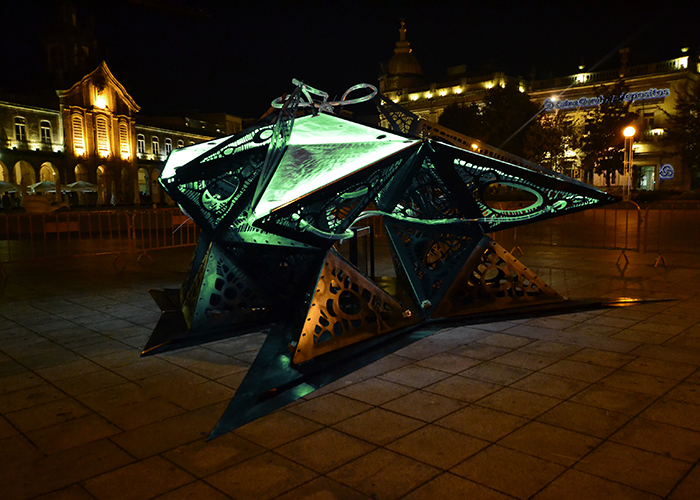
Abstract
In 2015 ecoLogicStudio designed a pavilion, called Urban Algae Folly, which aimed to present a new vision of the future of biodigital architecture. The project was so successful, it went on to be further developed and displayed in the EXPO Milano 2015 Future Food District. This research will be analysing the importance of this project through the lens of ecology and Timothy Morton’s notion of “dark ecology” to better understand its impact on the world of architecture. It will go on to discover its relationship with one socio-political event, one technological development, one publication and one artwork to further explain why this project is considered “advanced architecture” and what events influenced the designers to create the world’s first living edible architecture.
1.Introduction
The word “Oecologie”, originally coined in 1866 by the German zoologist Ernst Haeckel in his book Generelle Morphologie der Organismen, is derived from the Greek words “?????” (“oikos”) which means “house” or “dwelling place” and the word “?????” (“logos”) which translates to “word” or “language”. The term later on spelled as “ecology”, is used to refer to the study of the relationships between living organisms and their environment. Living organisms that interact within an ecological system create networks, and the shape and structure of these networks is known as “topology”.
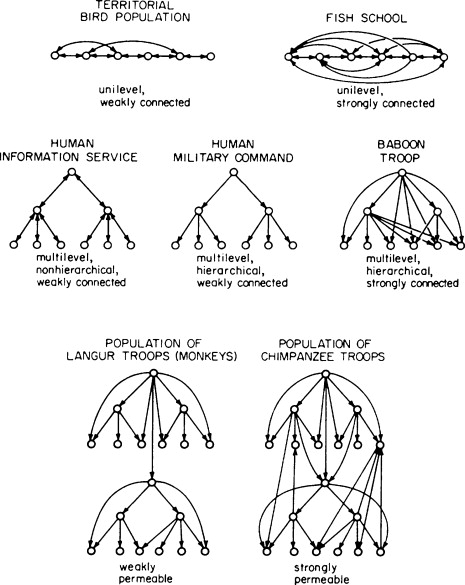
In 2016 Timothy Morton published his ecocriticism book Dark Ecology: for a Logic of Future Coexistence, a very important piece of writing challenging its readers to rethink and reexamine humanity’s relationship with the natural world. Timothy Morton deconstructs and reassembles the idea of ecology within this Anthropocene era of thinking and suggests a necessary revaluation of methodologies of our current thinking. Morton defines “dark ecology” as a profoundly close encounter with the approaching fate of environmental breakdown and calls for an implementation of new ecological politics that put less emphasis on humanity’s pursuit of progress and more focus on reshaping society’s topology to a more playful, more ecopositive one, that brings us closer to our natural environment.
Morton emphasizes on this “dark ecology” idea as a predetermined ecological collapse, due to this duality of thinking between humans and geology. Morton’s proposes , for us to re-establish balance through the current climate crises, he mentions the concept of “hyperobjects” are objects which have a vitality to them but you can’t touch them like climate change. You can experience the effects but cannot be touched.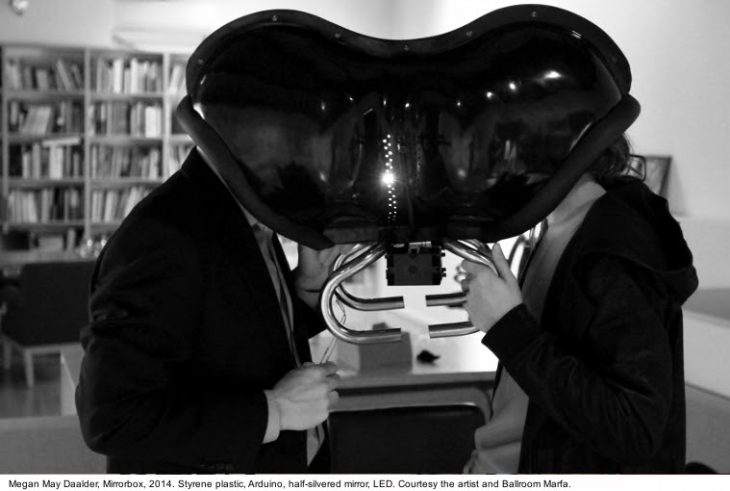
2. Ecology as the Driving Force Behind Innovation
2.1 Socio-Political Event: Earth Rio Summit II 2012
Humans have been distancing themselves away from the natural environment that surrounds them, giving them a sense of detachment. Recently, we have reexamined the relationship of humanity with nature through the influence of hyperobjects. Hyperobjects aren’t something we see but it’s an understanding of our actions at a large scale with the help of computational power, which puts into perspective our effect on our environment.
As mentioned in Timothy Morton, Dark Ecology, we must understand “the consequences of their (our) actions spread further than just their (our) immediate field of reference”. This idea creates a place in the environment for us to put ourselves to decide what comes next. At the Earth Summit of Rio 2012 goals were created in order to lessen the consequences of the current climate crisis. Morton reminds us that a shift in ecological culture and politics must happen from the human level towards species at earth magnitude, reestablishing the ties of non humans to humans. The Summit highlights the critical position we are in, creating a clear understanding of what must be done at an individual level.
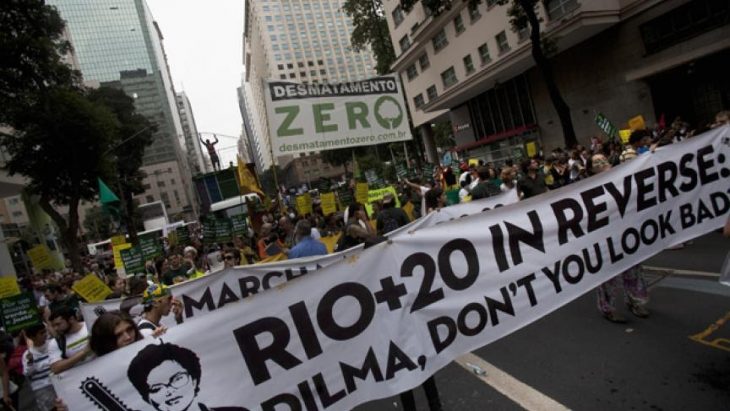
2.2 Technological device: Encapsulation of Algae, Vemmer and Patel, 2013
Microalgae are organisms found in the products of our everyday life and plenty of industries worldwide. They have a huge impact on the biogeochemical cycles, i.e. the atmosphere, the biosphere (living organisms), the hydrosphere (water reservoirs), and the Lithosphere (minerals of the Earth’s crust). Microalgae play an important role in the circulation of Carbon, Nitrogen, Phosphorus, Sulphur, and Oxygen, it has also been proven that they provide almost half of the atmospheric oxygen.
With the help of databergs and the computational power, Timothy Morton mentions while he explains the Hyperobjects, that the human mind is unable to comprehend the effect of the individual impact on the Earth scale, and this is where the computational power played a huge role by illustrating the effect and make it comprehensible to the human mind and accordingly opening the perspective on how much the smallest elements can have the greatest effect on our ecosystem. So in that sense, this is how much of an effect algae can have on the whole ecosystem and putting that into an application, synthesizing microalgae can contribute to a reduction of greenhouse gases in the atmosphere.
This is where the Encapsulation of Algae takes place, encapsulation is the process of creating a semi-permeable membrane capsule around the algae, this capsule could have different characteristics like a certain number of coating layers, a certain melt point, different particle size, or specific coating composition. The capsule is then set to release its components under certain or specific conditions. Efforts were made to improve the quality of immobilization, which contribute to the maintenance of cell function and overall survival rate.

2.3 Publication: Towards an Ecology of Materials, Annual Review of Anthropology, Volume 41, 2012.
Through the entire article, Ingold relates material culture studies and ecological anthropology with the material conditions of social and cultural life; and materials – as objects and as in the environment and how humans and nonhumans adapt to them. Material culture talks about human beings’ relation to things while trying to capture the physicality of the material whereas ecological anthropology deals with human beings’ relation to biotic and abiotic environments.
Ingold goes on to bring out the difference between humans and nonhumans with respect to material ecology. Incessant interaction with objects is what differentiates humans. Nonhumans’ interaction with objects is subjective and these said objects are replaceable. They interact with objects on a sustained basis.
The ecology of materials cannot be spoken about without defining materiality. Materiality can be the hard physicality of the world’s material character; or the socially and historically situated agency of human beings who project on naturally given raw material into the finished forms of objects.
Within materials and materiality, Ingold talks about Aristotle’s reasoning that everything is a compound of matter (hyle) and form (morphe), which are brought together in the act of its creation. Creation starts with a form in mind and a formless lump of raw material, and it ends when form and matter are unified in the complete object. Form is actively imposed on, whereas matter is that which was imposed upon, to bring forth its potential.
When a form is imposed on a raw material, a complete object is formed. Any further changes to this object after it has been completed is either because of consumption or further impositions which make it a new object. If this is seen as a sample of material, by contrast, is a potential—for further growth and transformation. Hence, in a world of materials, nothing is ever ‘completed’. From an object-centered perspective, this is seen as recycling.
The distinguishing factor between the ecology of materials and mainstream studies of material culture is the interchange of materials. The living body is sustained because of the continual taking in of materials from its surroundings and, in turn, the discharging into them.
To conclude his article, Ingold quotes Andy Goldsworthy to highlight the importance of amalgamation of materials, “The strength of a work lies in the ‘energies’ emanating from materials in their movement, growth, and decay and in the fleeting moments when they come together as one”.
2.4 Artwork: “Ectogenesis/Phytoteratology: Plant-Human Monsters”, Špela Petri?, 2016
In her experiment Ectogenesis, the biologist and artist Špela Petri? researches the possibility to create a hybrid organism between human and plant, using hormones as carriers of transgressing information. The project researches the anxieties and promises of the recent developments in biotechnology through bio art, in which the boundaries between organisms and existing living species are blurred.
The experiment Ectogenesis by the biologist and artist Špela Petri? represents a vision of symbiosis between humans and nature. Ectogenesis reiretirates a contrast of the “hyperobjects” ??mentioned by Morton, ?where humans and ecology play the same role within this scalable multi-layered new way of thinking (?Jarosz, 84). Morton refers to planetary scale when introducing this idea in his publication, while in “Ectogenesis/Phytoteratology: Plant-Human Monsters” the experiment connects human and nature at micro scale, where this interaction signifies the humans’ need of nature to survive and vice versa. The experiment breaks any paradigms that divide this duality of thinking between ecology and humans and presents a fully symbiotic connection or even a start for singular multi-scalar human-ecology intertwined methodology.
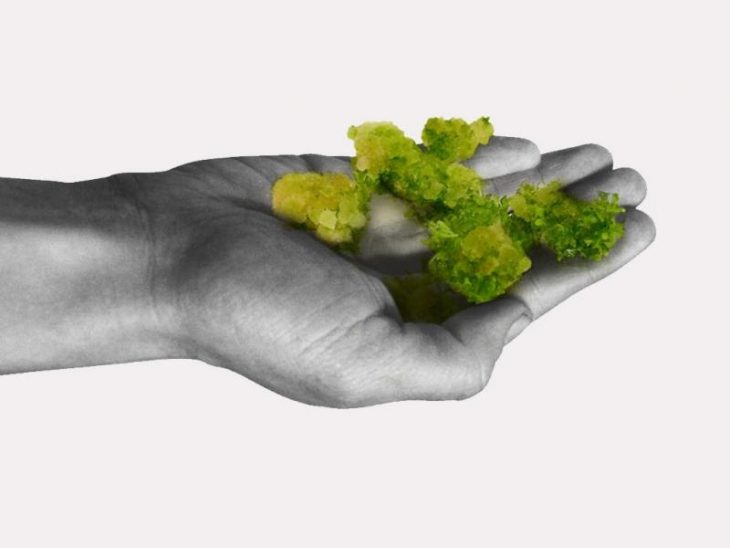
3. Advanced Architecture as an Impediment to Dark Ecology
The Braga Pavilion or Urban Algae Folly, designed by ecoLogicStudio in 2015 and originally located at Praça da República, Braga, Portugal, is the world’s first living edible architecture . The underlying concept of the folly was to imagine and construct a piece of biodigital architecture made of microalgae organisms.
The structure integrated micro-algal cultures and real-time digital cultivation protocols within a soft ethylene tetrafluoroethylene (ETFE) skin and aimed to grow Chlorella inside the folly itself to demonstrate a vision of the future of architecture where nature can become a part of the building process but not in a matter that exploits it, rather in a way that allows it to grow and flourish. The final result was an inherently responsive and adaptive system which cultivated 35g of Chlorella a day, which absorbed 1.5kg of carbon dioxide and produced 750g of oxygen every day.
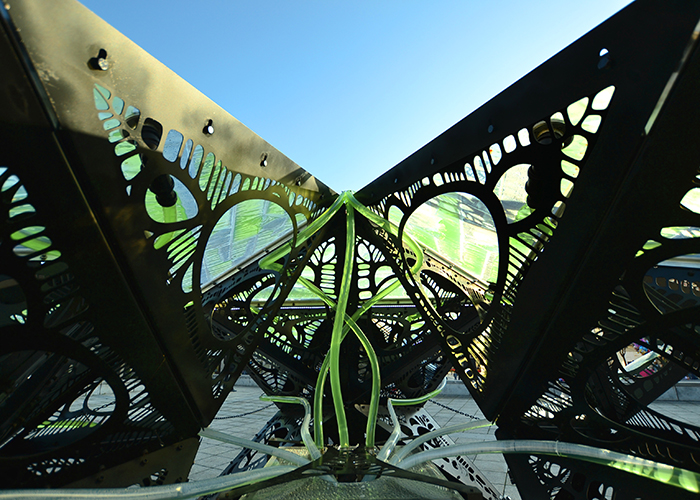
Braga Pavilion is the application of Rio Summit at an individual scale. Its concept gets intertwined with Timothy Morton, Dark Ecology, and the Goals for Sustainable Development as all three emphasize the development of computation and its power. It is an optimistic set of goals in hope to lessen the consequences of the current Climate Crisis. An example that education, research and innovation with the comprehension of hyperobjects could develop sustainable design methods that have a positive Earth-scale impact.
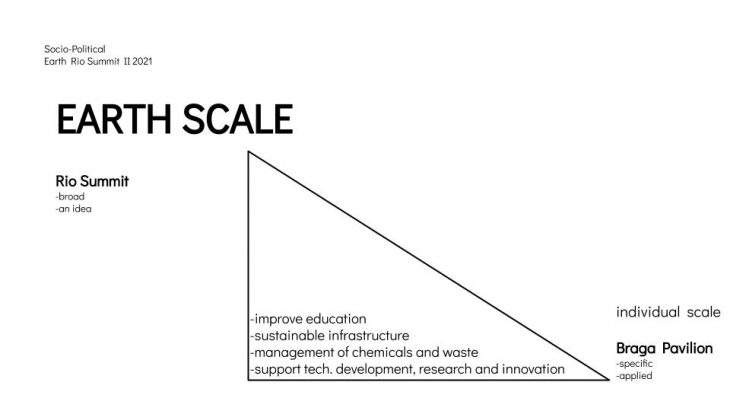
The Urban Algae Folly adopted the methodology of the encapsulation of Algae by using the same Chlorella Vulgaris while manipulating the conditions round the algae – alternative energy, water, oxygen, and digital control systems, to regulate the algae and regulate it to retort and befits weather and therefore the movement of the general public. As the sun rises the algae would photosynthesize which is able to make it grow, reducing the transparency of the Folly which enables it to provide shade for the public. The electro valve embedded in the design is responsible for changing the flow speed of the algae through the folly by detecting the motion of the people passing through, which creates an emergent differentiation through the space. This will have an enormous effect as visitors will take pleasure in the natural shading provided by the algae folly while having the ability to affect it in real-time.
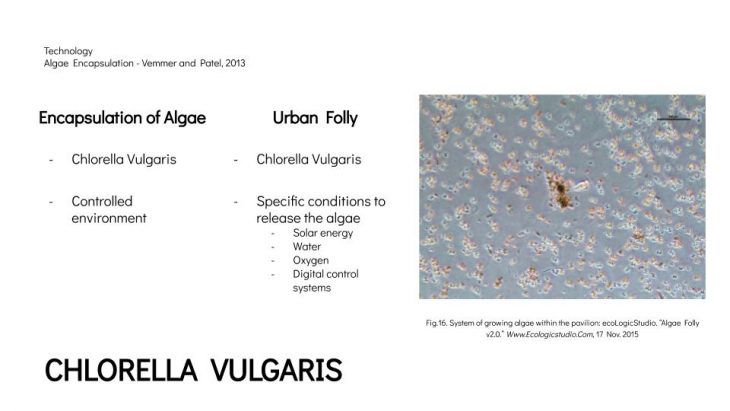
Having said that, another defining factor of the pavilion is the integration of the material (algae) with a technique (real time digital cultivation) and the form (ETFE architectural skin system) that relates to the concept of hylomorphism from the Towards an Ecology of Materials. The end product of the pavilion came after unifying the material, technology and environment with the design practice as an undifferentiated scheme, after being able to process the material into a final object as informed by the environment.

Špela Petri?’s Ectogenesis and ecoLogicStudio’s Braga Pavilion both focus on the biological process involved in the cultivation of living organisms. The two works are centered around the development of an artificial man-made system which can be used for breeding living beings while simultaneously focusing on the exploration of the need for symbiosis between humans and our environment. Even though, in the case of the Braga Pavilion the architects were examining methods of cultivation of algae as a potential food source and a metabolic system for cleaning up the air pollution within our cities and in Ectogenesis the process is about creation of an hybrid organism half-plant and half-human, both of these works reflect Morton’s notion that humans should not strive to derive from the nonhuman anymore and seek more symbiotic relationships and interactions.
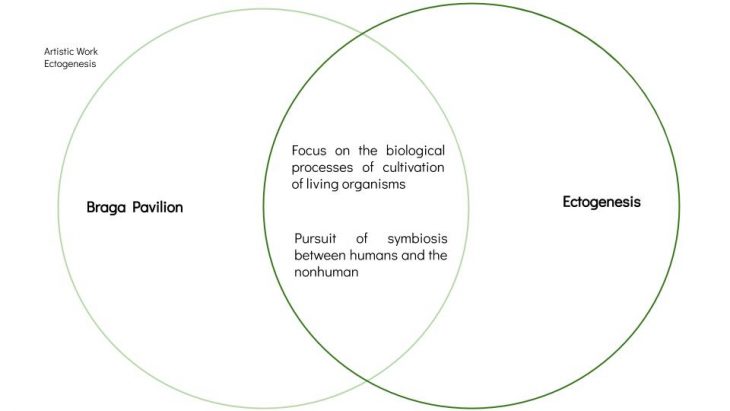
In his book Dark Ecology Morton argues that humanity does not consider itself one with nature but rather a separate entity: “two levels we usually think are distinct: geology and humanity” (Morton, 7). The architects Claudia Pasquero and Marco Poletto, lead designers of the project, challenge this human perception by creating a playful pavilion that connects humans to the nonhuman world in a symbiotic system that shows how each can influence the other and help it grow and develop. EcoLogicStudio’s design precisely responds to Morton’s idea of a topology of playfulness that creates and provokes multiple interactions between humans and the natural environment and presents a prerequisite for a process that Morton defines as “ecognosis” – the moment when humans begin to rethink their position in the Anthropocene and move towards considering themselves a species, a part of the natural world (Morton).
4.Conclusion
After the thorough research of the Urban Algae Folly through a socio-political event, technological device, publication and artistic work in the light of Ecology and Timothy Morton’s Dark Ecology, the urban folly is one iteration of endless possibilities. That can be modified and transformed just like the model in the Milan project by EcoLogic studio, where they modified the experiential approach for the inhibitor from an observer to an interactor. The physical interaction was stated in the concept but it was not applied functionally in the design. The technology can then be adopted to generate more permanent designs rather than temporary installations for future designs.
Bibliography
Cambridge Dictionary. “ECOLOGY | Meaning in the Cambridge English Dictionary.” Cambridge.Org, 30 Oct. 2019, dictionary.cambridge.org/dictionary/english/ecology. Accessed 7 Oct. 2020.
ecoLogicStudio. “Algae Folly v2.0.” Www.Ecologicstudio.Com, 17 Nov. 2015, www.ecologicstudio.com/v2/project.php?idcat=3&idsubcat=71&idproj=148. Accessed 7 Oct. 2020.
Haeckel, Ernst. Generelle Morphologie der Organismen. Berlin, Georg Reimer, 1866.
Ingold, Tim. “Towards an Ecology of Materials.” Annual Reviews, 2 July 2012, environmentsofmodernity.files.wordpress.com/2018/03/ingold_ecology-of-materials.pdf.
?Jarosz, Nanda. “On Timothy Morton’s Dark Ecology: for a Logic of Future Coexistence.” Review of Dark Ecology: for a Logic of Future Coexistence, by Timothy Morton. PHILAMENT, 2019, vol.25.
Morton, T. (2018). Timothy Morton. In 979685150 759074338 L. Copelin & 979685151 759074338 P. Gardner (Authors), Hyperobjects for Artists (pp. 4-6). Marfa, Texas: Ballroom Marfa.
Morton, Timothy. DARK ECOLOGY?: For a Logic of Future Coexistence. New York, Columbia University Press, 2016.
Prager, Steven D. and Reiners, William A. “Historical and Emerging Practices in Ecological Topology.” Ecological Complexity, vol. 6, no. 2, June 2009, pp.160–171. Accessed 11 Oct. 2020.
Schwartz, Astrid, and Jax, Kurt. Ecology Revisited?: Reflecting on Concepts, Advancing Science. Dordrecht, Springer, Cop, 2011.
THE 17 GOALS | Department of Economic and Social Affairs. (n.d.). Retrieved October 12, 2020, from
https://sdgs.un.org/goals
Verhoef, Herman A, and Peter J Morin. Community Ecology?: Processes, Models, and Applications. Oxford, Oxford University Press, 2009.
Ecological Threshold: Bridging Ecology and Advanced Architecture Through a Deconstructive Analysis of the Braga Pavilion is a project of IaaC, Institute for Advanced Architecture of Catalonia developed at the Master in Advanced Architecture in 2020 by:
Students: Hairati Tupe, Rosamary Machado, Uri Lewis, Daniel Sorial, Tsvetelina Bogdanova
Faculty: Manuel Gausa, Jordi Vivaldi Piera
